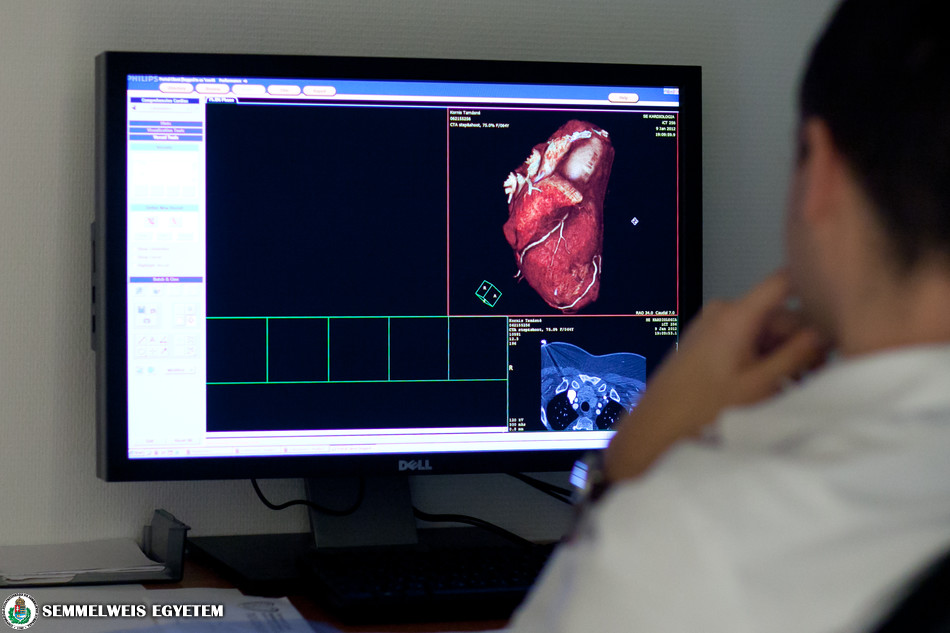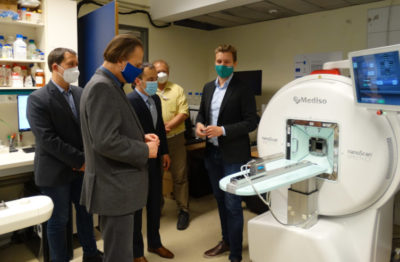Despite widely available drug and device therapy options, most deaths in Hungary and in the European Union occur as a result of heart failure or ischemic heart disease. Mortality rates can be improved mainly through more efficient prevention and increasing the quality of treatment. To that effect, as part of the National Heart Program, the medical group of Semmelweis University, together with four R&D companies – Mediso Medical Kft, a Neumann Medical Kft, Pharmahungary 2000 Kft and TwinMed Kft – developed innovative diagnostic and therapy methods, services and products for the early detection and treatment of these two diseases. The research project, which received HUF 3.3 billion support from the National Research, Development and Innovation Office, contributed to the long-term reduction of the prevalence of heart failure and ischemic heart disease, and the mortality caused by these diseases.
The research results achieved during the project resulted in many novelties in practical medicine as well, which are currently under industrial property protection and their economic use is also underway. As part of the National Heart Program, “core” service laboratories were also created, where molecular biology, cell technology and animal testing examinations, as well as human imaging and bioinformatics procedures can be carried out, which are crucial for cardiovascular research. The project made it possible for the necessary investments to be realized, as well as the purchase of valuable scientific equipment, various tools and machines. On the long term, these will provide laboratory services, as well as a foundation for domestic and international research collaborations.
In addition to the units of Semmelweis University, the R&D firms participating in the program helped to utilize the expertise collected during the experiments in the creation of diagnostic and interventional tools, as well as the software behind them. Such developments include e.g. is a new type of heart catheter (BELOS FTS 100) created by Twinmed Kft, which can efficiently remove blood clots causing blockages in the coronary arteries of heart attack patients, or a new software from Neumann Medical Kft that helps in the complex, structured description of findings of coronary artery CT scans. By using artificial intelligence, they created a diagnostics system that can recognize the structure of the plaque deposits on the blood vessels, thus contributing to the risk assessment of heart disease patients.
The two software tools developed in close cooperation by Pharmahungary 2000 Kft and Semmelweis University’s Department of Pharmacology and Pharmacotherapy, which they also made available in the form of a user-friendly web application as part of the National Heart Program, support two important stages of the development of drugs used for heart and vascular diseases. The miRNAtarget software helps the finding of preclinical targets, while the Vigilace software assists in the early identification of side effects. They also created a prototype for a tool (Vesics platform) for isolating extracellular vesicles, as well as a system that can detect the hidden cardiotoxicity of drugs in the early phase of drug development (Hiddentox platform). At the Department of Genetics, Cell- and Immunobiology, they developed a platform to standardize the extracellular vesicle measurements in cardiovascular diseases, and an extracellular vesicle marker panel that can signal a cardiac muscle damage.
Mediso Kft and the Department of Biophysics and Radiation Biology took part in the program jointly by developing a PET/CT machine that can create more detailed than ever images of cardiology examinations performed on test animal subjects.
The interdisciplinary research – medical science, IT, biophysics – carried out under the National Heart Program are translational, meaning that the results of the basic research can be applied directly in patient care as well.
Orsolya Dávid
Translation: Tamás Deme
Photo (illustration): Attila Kovács – Semmelweis University



